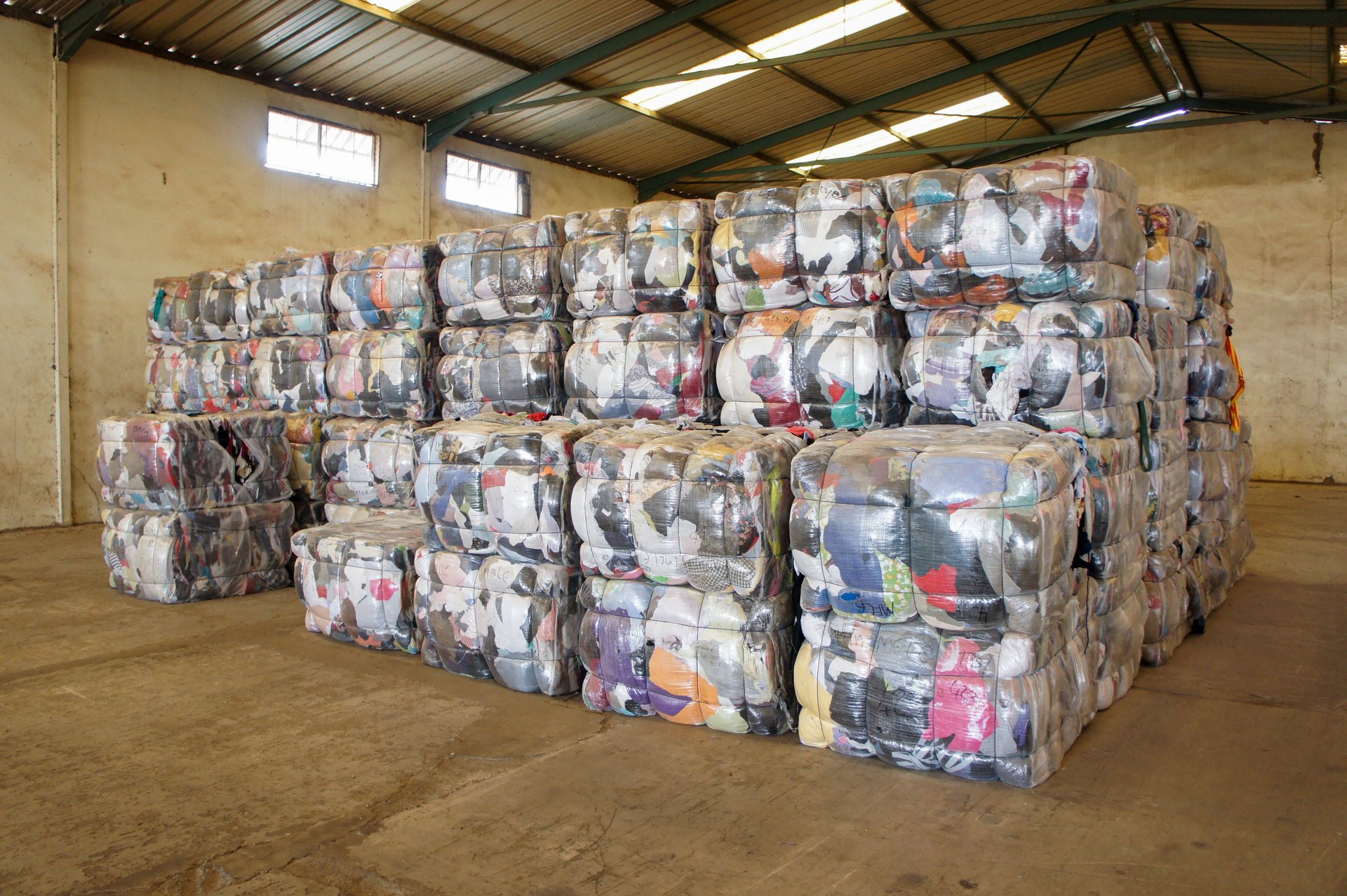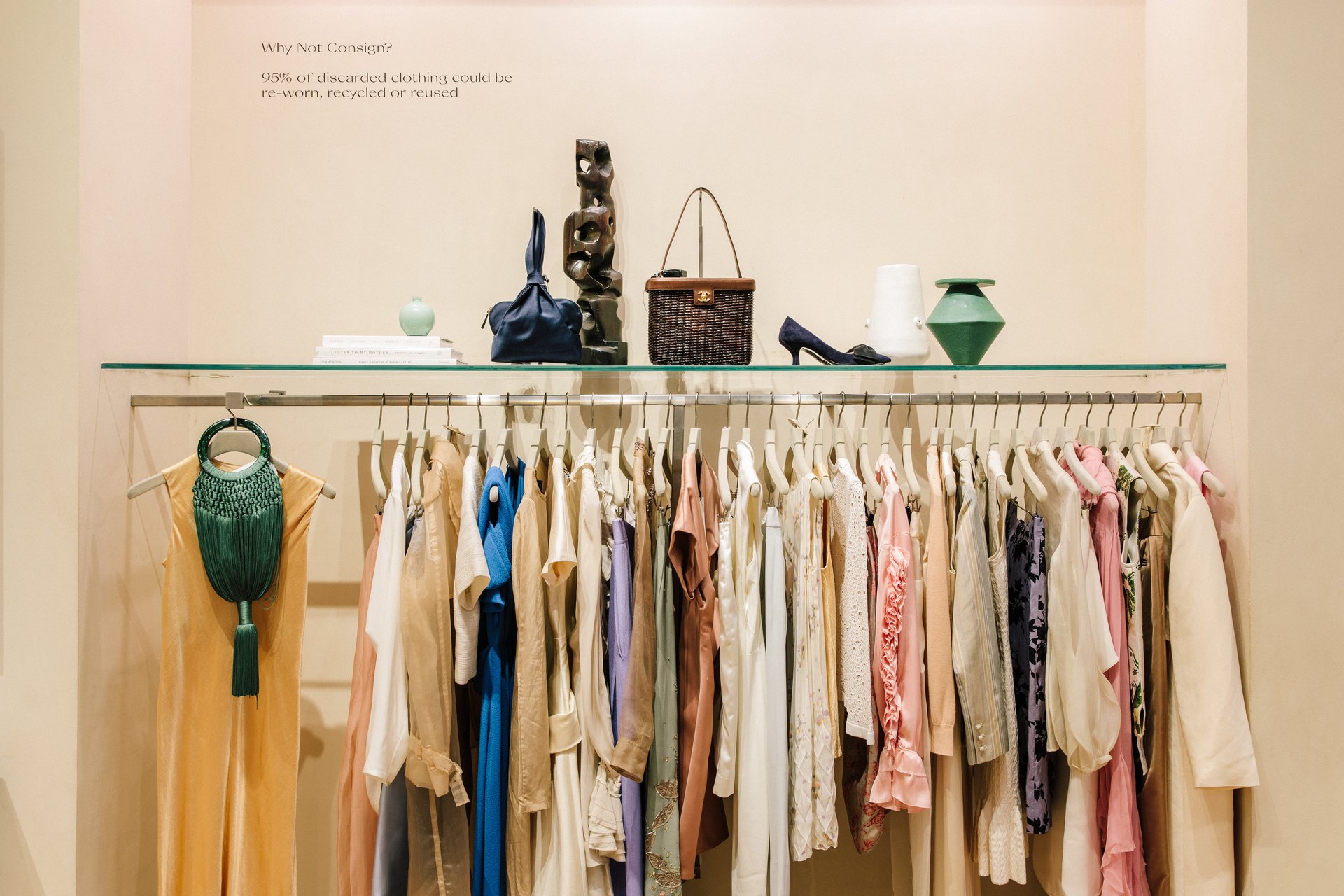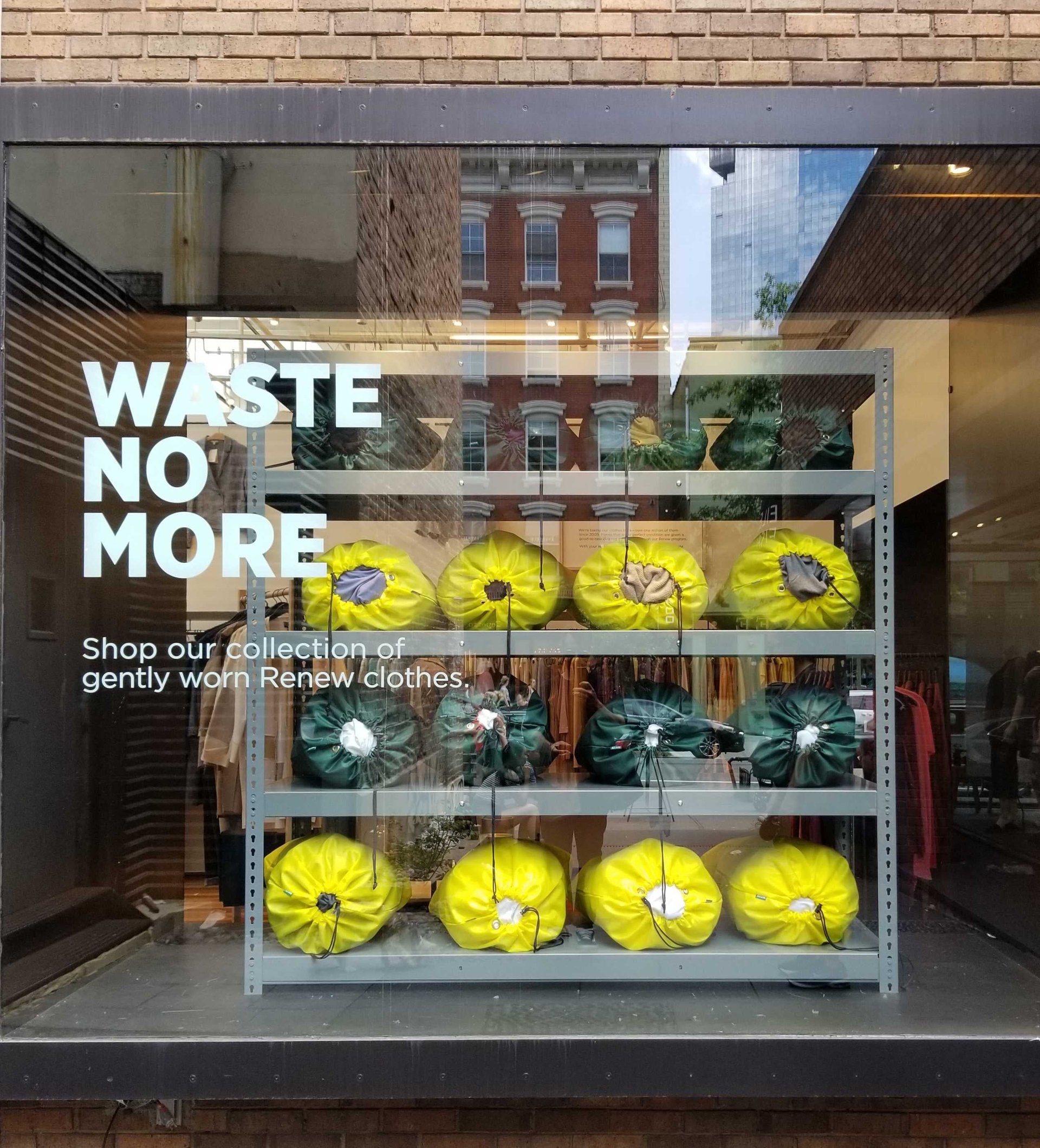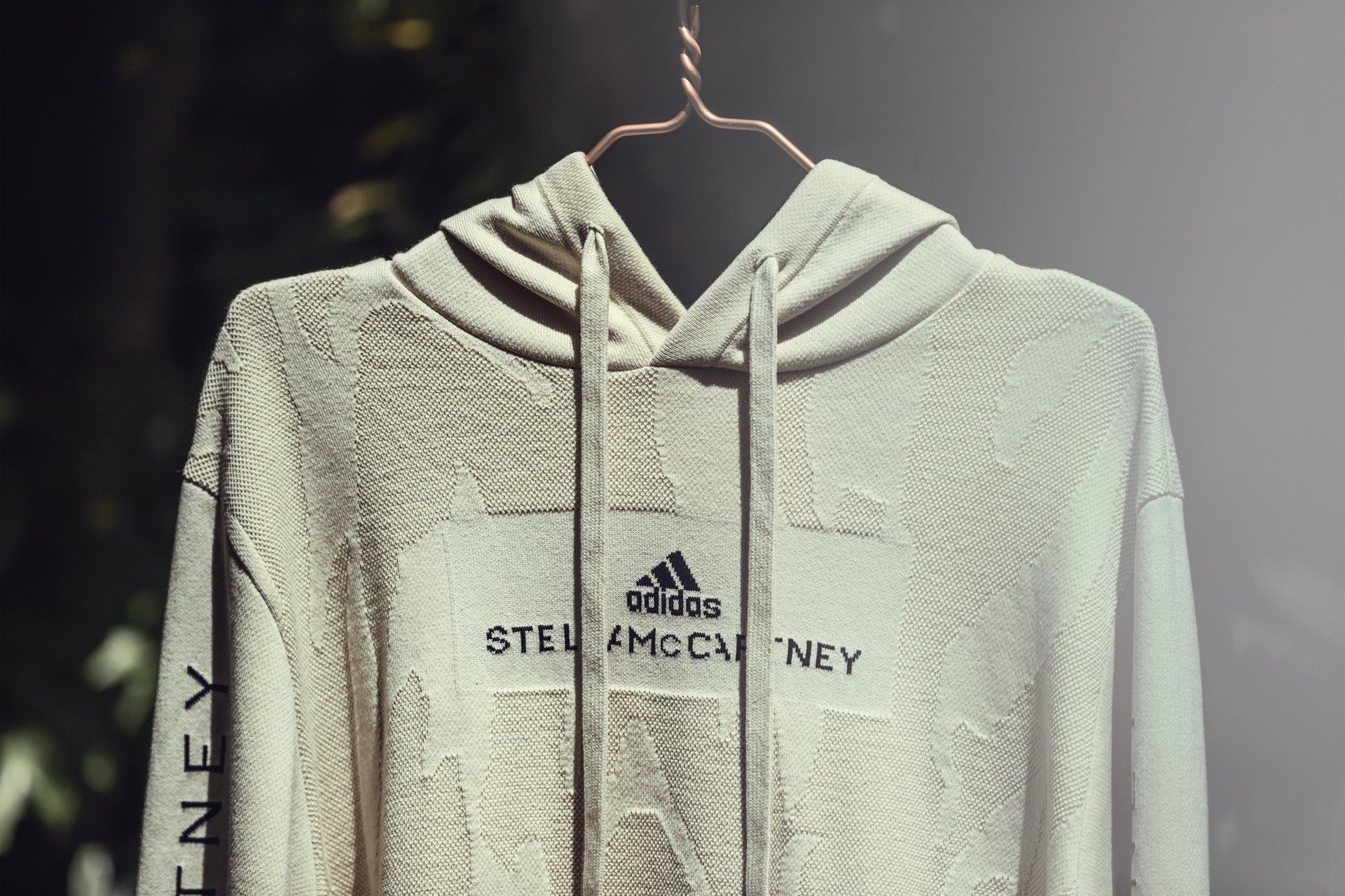There’s never been a better time—or more need—to buy your clothes used
When I first started buying used clothes, it had nothing to do with sustainability. I was learning about fashion through online forums, and browsing the buy-and-sell marketplaces they had for members. The more I learned, the more eager I became to grab pieces from old collections or discover bargains on new ones. Eventually, I was monitoring these sites, as well as eBay and even Japanese marketplaces, looking for rare finds.


When I first started buying used clothes, it had nothing to do with sustainability. I was learning about fashion through online forums, and browsing the buy-and-sell marketplaces they had for members. The more I learned, the more eager I became to grab pieces from old collections or discover bargains on new ones. Eventually, I was monitoring these sites, as well as eBay and even Japanese marketplaces, looking for rare finds.
Today, except for a few essential items—socks, underwear, t-shirts, and sometimes jeans—most of what I wear, I buy used. When I started shopping this way, it took a good deal of searching to locate what I wanted. Now the search is easier than ever. In the past decade, at least half a dozen peer-to-peer fashion marketplaces or full-service consignment shops have popped up online, making available a huge and easily accessible selection of used clothes spanning a range of brands, styles, and price points.
At the same time, I’ve come to realize that buying used is more important than ever: The fashion industry produces huge amounts of waste—nearly 100 million tons a year by one estimate (pdf)—and it isn’t slowing down. Fashion labels keep making more clothes to feed an appetite for constant newness that they’ve helped create. This torrent of garments is burning through resources and churning out pollution, prompting groups such as the United Nations Economic Commission for Europe to sound an alarm over the environmental consequences.
It’s become necessary for the industry to find better ways to reuse existing materials, and maybe at some point in the future, brands will be able to create new collections entirely from old textiles. But that point is still a ways off. Until then, the most sustainable garment you can buy is probably one that’s not new at all.

The resale revolution
Before the internet, buying clothes was far easier than selling them. In the pre-digital age, the average person’s options for peddling unwanted items were clunky and inefficient, and their reach limited. You might have a yard sale, or spread your stuff out on the stoop. Maybe you put an ad in the paper, or lugged your goods to a consignment shop, if there happened to be one that was both nearby and interested in what you had.
That’s all changed. Soon after sites such as eBay and Craigslist appeared in 1995, anyone with a camera and an internet connection could access hundreds, and then eventually millions, of potential customers, an evolution that connected collector communities and casual purchasers alike. By the aughts, eBay in particular had become a powerful force in fashion resale, but fashion was just one category among many it sold, and the site lacked certain features, such as authenticating products or handling the work of listing items. Just as it was inspiring competitors, it also left an opening for them.
An inflection point arrived between 2009 and 2011. That’s when fashion “recommerce” companies ThredUp, Vestiaire Collective, Threadflip, Depop, Poshmark, and The RealReal all got their starts.
James Reinhart, cofounder and CEO of ThredUp, conceived the idea for the company in 2009, after trying to sell a bunch of shirts to a local consignment shop, which rejected them. Reinhart thought the shirts, from brands such as J.Crew, Banana Republic, and Brooks Brothers, still had value, and created ThredUp to solve his own problem. It launched as an online clothing swap for men, but when that model quickly showed its limits, ThredUp pivoted into a resale site focused on women’s and kid’s clothing—”a better version of eBay,” as Reinhart described it to Inc. At that point, the company followed the peer-to-peer model, where sellers are responsible for packing and shipping straight to buyers. It wasn’t until ThredUp changed to a full-service model, letting customers send their items to the company to photograph, list for sale, and ship to the eventual buyer, that things finally took off.

That was around 2011, the same year that Julie Wainwright, the former CEO of Pets.com, who was looking for her next act, got the idea to launch a full-service resale site of her own. Wainwright had accompanied a friend on a shopping trip to a high-end consignment store and realized she didn’t know of any equivalent online. So she created one, and called it The RealReal.
“There was nothing out there that provided the level of service and trust that needed to be added to the equation,” Wainwright told the now-defunct site Racked in 2017. “eBay can say 90% of its products are legitimate, but then what about the other 10%? There were consignment stores, but the space was always limited, and most of them weren’t big enough to be sophisticated. I wanted to construct a business that gives you the best of the internet, and then fills in where the internet leaves holes on trust, authentication, and service. We take off of the top of eBay and the bottom off Sotheby’s.”

The gamut of fashion resale companies today span a range of business models and audiences. Similar to ThredUp, The RealReal has consignors send in their goods, but while ThredUp has a vast, encompassing brand list, including low-cost labels such as Old Navy and H&M, The RealReal is selective. It takes mostly luxury labels, as well as some non-luxury but still high-demand brands, such as Supreme.
Six-year-old Grailed, on the other hand, is a peer-to-peer marketplace where buyers and sellers handle the listings and transactions entirely. It evolved out of online fashion forums, and its customers are mostly young guys versed in designer labels and streetwear. Tradesy, founded in 2012, is a peer-to-peer market too, but offers some assistance to sellers, helping them make photos presentable and sending them shipping kits. Poshmark, which launched in 2011 and is one of the largest marketplaces for secondhand fashion, has a social component and sells a wide range of products to women and men. Depop, another of the class of 2011, is similar, but with a strong following among teens and influencers.
Not all of these companies have flourished—one of them, Threadflip, folded in 2016. But many are doing well. This year, The RealReal went public, raising $300 million in its debut and earning a market capitalization of well over $1 billion.
The secondhand clothing market is also expected to keep growing. A report by ThredUp and GlobalData, a retail analytics firm, estimated that resale totaled $5 billion in 2018, and projected that would increase to $23 billion by 2023. ThredUp would naturally present a rosy view of resale, but it’s not alone in seeing the market’s strength: Investment firm Cowen pegs resale’s compound annual growth rate at 29%. And in a 2019 joint report on the state of fashion, McKinsey and Business of Fashion predicted that one of the top themes this year would be more consumers turning to resale and rental fashion, driven by the accessible prices—particularly as luxury continues getting more expensive—and the sustainability benefits.
The opportunity in reselling clothes is great enough that brands and retailers including H&M, Eileen Fisher, and most recently Macy’s and JCPenney—both in collaboration with ThredUp—are selling preowned clothing and promoting the environmental benefits. “Preowned is very attractive to many customers, not just because of the price but also because of the sustainability,” Macy’s CEO Jeff Gennette said on a recent call with investors. Reebonz, a large multibrand retailer based in Singapore, now sells used clothes too. (Several recommerce sites, including ThredUp and The RealReal, use sustainability as a core part of their marketing to reach new customers, whether for altruistic or cynical reasons or both.)

The result of all this is a large and fast-growing array of labels, price points, styles, and sizes available across sites offering secondhand clothes—which still include eBay and big players in local markets, such as Rakuten and Yahoo Auctions in Japan. A spokesperson for ThredUp says the site lists about 40,000 items every day that have passed its quality inspections, representing about half of what people send in. It pays for the items it accepts, and the rest it sends to recycling programs.
The RealReal reported that 2.6 million items were consigned on its site in 2018, and says it inspects and authenticates each one. (It has allegedly allowed some counterfeits to slip through, and is currently tangled in a lawsuit with Chanel, which says it is the only authority qualified to authenticate its items.)
The volume and variety of used clothes available makes it simple to find alternatives to buying new, and makes shopping secondhand a different experience than the old days of browsing dusty racks jammed with odd castoffs at the local thrift store.
The challenges of recycling clothes
In the time that resale options have been proliferating, so have new clothes. McKinsey estimates that between 2000 and 2014, the amount of clothing manufactured around the world doubled, and the number of garments the average consumer purchased each year rose by 60%. Yet, compared with 15 years ago, consumers now keep their clothes about half as long.
This paradigm is largely the result of a fashion supply chain that specializes in cranking out clothes at cheap prices, often at the expense of workers. Consumers, enticed by a deluge of imagery and information online, crave unceasing newness and increasingly treat clothes as a form of disposable, low-cost entertainment. In one recent survey of 2,002 adults in the UK by credit card company Barclaycard, nearly one in 10 admitted to buying clothing just to take a picture for social media before returning it.
The fashion industry has started to recognize the need for change, and generally sees the solution in a circular economy, meaning one that reuses and repurposes existing garments while reducing waste and the use of virgin resources. To make it a reality would require a few different measures, but a critical one would be the ability to turn old clothes into new by breaking them back down into raw materials and weaving those into textiles for future garments. Unfortunately, that’s not easy to do.
We can recycle some polyester and other plastics, since they can be melted down and spun into new fibers. Brands such as Zara, H&M, Adidas, and Nike have already made commitments to increase or exclusively use recycled polyester in their products, though much of it is from reclaimed ocean plastic, not old clothes. (The practice is worthwhile, but sadly unlikely to be enough to clean up the plastic in our oceans.) Recycling other materials is more difficult, however, notably in the case of cotton, the most-used natural fiber in clothing.
The standard method for recycling cotton involves mechanically pulping it to break it down into raw material that can be reused. That process, however, chops and shortens the fibers. Cotton fabrics derive their strength and softness from the length of the fibers, longer being better, meaning pulping degrades the quality of the material. That’s why a lot of recycled cotton is used for things like making rags or stuffing cushions, and why brands that use recycled cotton in clothing only allow a limited amount.
There’s also the issue of fiber blends. A great deal of clothing today is made from mixes of fabrics, such as cotton and polyester. To recycle it, you first have to separate those fibers, but there isn’t currently a large-scale way of doing so.
A few companies are making good progress on these issues, generally via chemical methods that allow them to dissolve the fibers and recapture them as raw material. UK company Worn Again uses a chemical process that it says lets it separate the polyester and cotton in blends, producing virgin-equivalent polyester and a cellulose pulp that can be made into viscose or lyocell, a suitable substitute for cotton. The Hong Kong Research Institute for Textiles and Apparel, in partnership with H&M, has created its own process to separate cotton and polyester, yielding polyester fibers and a cellulose powder that can similarly be used for new material. They opened a facility to allow other brands to test the process and are working to scale it up.
Another promising advance comes from Evrnu, which recently unveiled a hoodie created in collaboration with Adidas and designer Stella McCartney. It’s the first product made of its “NuCycl” fiber, a form of lyocell it makes from fabric diverted from landfills. The company says NuCycl can be broken down to a molecular level and regenerated into new fabric over and over, from used garment to new in an endless loop, which is why it calls its hoodie the “Infinite Hoodie.”

It’s an encouraging achievement, but the sweatshirt contains only 60% NuCycl, while 40% is still virgin material (organic cotton in this case). It’s also still a proof of concept rather than a real consumer product. The companies have made 50 and they’re not available for purchase.
The reality is that fabric recycling, while it holds tremendous potential, simply isn’t at a point yet where it can start to mitigate the problems of fashion’s overproduction. And while it’s nice that brands such as H&M tout recycling and more sustainable materials, it doesn’t offset the volume of clothes they put out. Zara by itself releases about 20,000 new designs a year (paywall). Meanwhile, the Ellen MacArthur Foundation, which advocates for a circular economy, estimated from interviews with experts (pdf) that less than 1% of the material used to make clothing globally gets recycled into new garments.
Brands surveyed by Global Fashion Agenda, a sustainability forum, also named fabric-to-fabric recycling the circularity goal they were having the hardest time hitting targets on. The group noted that there were multiple roadblocks, and a general “lack of ready-to-scale solutions.” Among its brand partners are H&M, Nike, Kering (owner of Gucci), and PVH Corp (owner of Calvin Klein).
While the industry works out how to refine and scale fabric-recycling, more clothes head to landfills or get incinerated. The US Environmental Protection Agency estimated that, in 2015, about 10.5 million tons of textile waste, including clothes and footwear, went into landfills—more than four times the amount that was recycled. On a global scale, the picture looks even more dire. Global Fashion Agenda and Boston Consulting group estimated (pdf) that the fashion industry produced 92 million tons of waste in 2015. They predicted that volume would grow 62% by 2030.
Wear and rewear
I never feel like I sacrifice anything by not buying new. In fact, I tend to prefer it. There is such an immense volume of used clothing available that basically any item I need or want I can find preowned, and the items I do buy tend to feel special since I know they aren’t widely available. Even in cases where there’s a specific piece of clothing I want, say a shirt from a designer’s latest collection, I’m usually able to find it if I’m patient.
In all the cases I can remember, the items I’ve purchased have been in excellent or like-new condition, and since I’m generally shopping designer brands, it’s much more affordable to buy preowned. (I’ve advocated trying to spend more on clothing in the past, but allow myself more flexibility when buying used.)
There are challenges that come with this way of shopping. It means I shop mostly online, so it’s not always easy to judge how an item will fit or look in person. That part can be a hassle, particularly when shopping on peer-to-peer marketplaces that don’t offer a return policy. (Be sure to check the policy of the site you’re shopping and the seller, just to be sure.) This issue is likely to be even more of a burden for women and men who wear larger sizes, since fit in those sizes can be poor to start with and may vary a great deal across brands.
Understandably, buying used may not suit everyone, but there are ways to make it easier:
- Get familiar with some favorite brands. When you know a brand well, you’ll have a better sense of its style, of what the fabrics are like, and whether the clothes are likely to fit you. It becomes much more clear whether an item will work for you than if it’s from a brand you don’t know.
- Know your measurements. Find some clothes you already have that fit the way you like and measure them. On shirts and jackets, for instance, measure the width across the shoulders and chest, and the length of the sleeves and body. On pants, measure the waist, the inseam, and the opening of the leg at the hem. Compare these measurements with those of the item you’re considering online and you’ll have a better sense of whether it will fit. It doesn’t guarantee perfection, but it cuts down the risk of ending up with something that doesn’t work.
- Buy only when it’s something you need or really want. If you’re shopping without a return policy, the risk of an item not working can actually be a good deterrent against impulse buys. One nice consequence of resale’s growth is that it’s also much easier to resell an item that didn’t work out, but it requires patience, and you could lose money on the deal. So make sure to consider your purchase carefully beforehand, and decide whether the potential benefit outweighs the risk.
And of course there are the long-established ways to buy used, such as local thrift stores and consignment shops. The options for shopping this way are numerous.
Buying used isn’t a cure-all for fashion’s environmental problems. The industry needs to find ways to recycle fabric and it needs to increase the amount of resale. It also needs to incorporate more sustainable materials, increase clothing’s longevity, train designers to make sustainability an inherent part of design, and work to change fashion’s throwaway culture. (That last one keeps brands’ profits high and runs counter to much of the messaging consumers are bombarded with, so I’m not holding my breath.)
Still, it’s hopefully a step in the right direction, and the timing is right for it to grow. A May report from the advocacy group Fashion For Good noted that recommerce “appears to be the most financially attractive” of the circular-economy models that brands can integrate into their businesses. And even as big as resale has become, recent surveys from both financial-services company Raymond James and retail-intelligence firm Coresight Research find that many shoppers still haven’t heard of some of the top recommerce sites. They represent a large, untapped audience.
Ultimately the goal should be for people to wear and rewear clothes until they’re actually worn out, and then turn them in to be recycled into new items. We can’t yet do the latter at scale, but we can start on the former. The best way to stop treating clothing as disposable is to stop needlessly disposing of them.